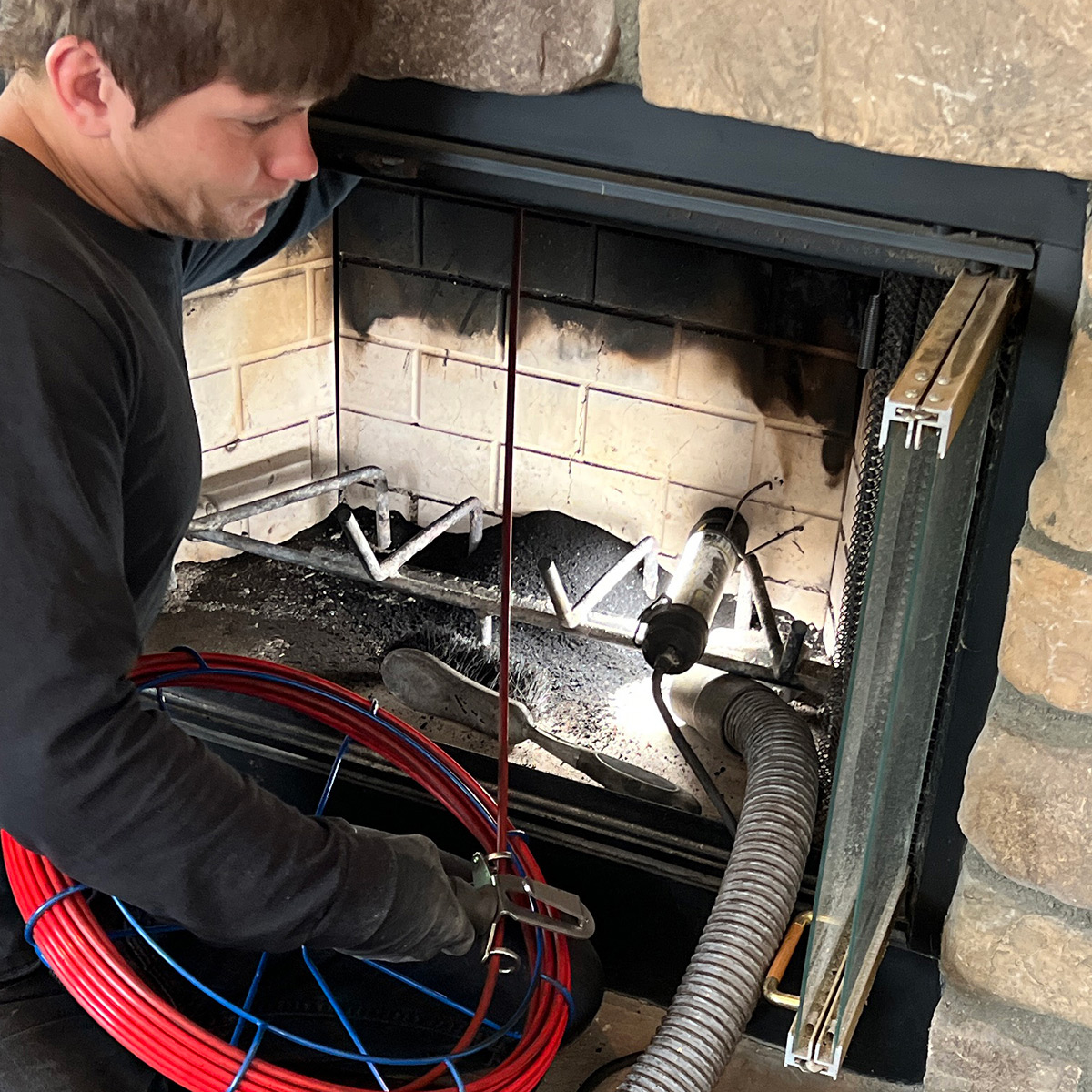DIY Chimney Sweep San Jose: Step-by-Step Recommendations for Success
DIY Chimney Sweep San Jose: Step-by-Step Recommendations for Success
Blog Article
The Ultimate Smokeshaft Cleansing Checklist for Homeowners
A properly maintained chimney not just enhances the general performance of your heating system however additionally mitigates the risk of possible threats such as fires and carbon monoxide leaks. Chimney Sweep San Jose. From examining the chimney framework to getting rid of creosote buildup, each step plays a vital role in protecting your home and liked ones.
Smokeshaft Examination and Analysis
When conducting a smokeshaft inspection and assessment, it is necessary to extensively check out the exterior and interior elements for indicators of damage or build-up. The inside of the chimney must be examined for any type of obstructions, such as bird nests or excess soot, which can posture a fire threat. Checking the flue for creosote buildup is crucial as this extremely combustible compound can spark and create a smokeshaft fire. In addition, evaluating the condition of the chimney liner is necessary to ensure proper air flow and safety and security.

Outside Maintenance and Repairs
Checking the outside of the smokeshaft for any architectural problems, such as cracks, loosened bricks, or indicators of water damages, is important in making sure the total safety and long life of the smokeshaft. Routinely examining for any type of fractures in the mortar or bricks can aid stop water from seeping in and causing damage to the smokeshaft structure. Attending to these exterior upkeep issues in a timely manner can extend the life of your smokeshaft and avoid costly repair work down the line.
Cleaning the Chimney Flue and Damper
To make sure proper functioning and security of your chimney, regular cleansing of the smokeshaft flue and damper is necessary. The chimney flue is the passage that permits smoke and gases to leave your home, while the damper is a movable plate that controls air flow. Begin by inspecting the Chimney Sweep San Jose flue for dig this any kind of obstructions such as bird nests, particles, or creosote accumulation. Utilize a flashlight to examine for any indications of damages or clogs. Next off, carefully get rid of any particles using a chimney brush or vacuum created for this purpose. Ensure that the damper opens and closes efficiently, as an appropriately functioning damper assists control air movement and avoids drafts when the smokeshaft is not being used. Furthermore, take into consideration installing a smokeshaft cap to avoid debris and pets from getting in the flue. Normal upkeep of the smokeshaft flue and damper not only boosts the effectiveness of your chimney yet additionally lowers the danger of chimney fires and carbon monoxide gas accumulation in your house.
Eliminating Creosote Build-up Securely
Just how can property owners securely get rid of creosote buildup from their chimney to keep its optimal functioning and safety and security? Creosote, a by-product of burning timber, can accumulate in smokeshafts over time, positioning a fire threat if not appropriately managed.
There are numerous methods to get rid of creosote, depending on the build-up's severity. For light creosote accumulation, using a chimney brush or a homemade creosote eliminator made of equal components water and vinegar can be effective (Chimney Sweep San Jose). For thicker down payments, specialist chimney cleansing solutions may be needed
It's essential to put on safety gear such as gloves, safety glasses, and a mask when taking care of creosote to stop skin inflammation or breathing. Additionally, appropriate air flow while cleansing the smokeshaft is important to prevent breathing in unsafe fumes. Regular chimney evaluations and cleansings can assist protect against creosote buildup, ensuring the security and effectiveness of your smokeshaft.
Fire Safety And Security Precautions for Chimney Owners
Normal chimney inspections by qualified professionals are crucial to determine any clogs, creosote buildup, or architectural concerns that could present a fire risk. Setting up a smokeshaft cap can prevent debris, pets, and rain from entering the chimney and triggering clogs or damage. Additionally, smokeshaft proprietors need to have a spark arrestor or chimney stimulate arrester mounted to prevent sparks from getting away and possibly igniting nearby combustibles.

Final Thought
By complying with the supreme smokeshaft cleansing checklist laid out in this post, property owners can examine, tidy, and repair their smokeshaft successfully. Proper upkeep not only check my site reduces the threat of chimney fires yet likewise lengthens the life expectancy of the chimney system.
Examining the chimney cap and crown for any kind of damages is vital to stop water from seeping right into the chimney and causing additional damage.
Routine upkeep of the chimney flue and damper not only boosts the efficiency of your chimney but likewise reduces the danger of smokeshaft fires and carbon monoxide accumulation in your home.
Regular chimney inspections and cleanings can aid prevent creosote accumulation, making sure the safety and security and efficiency of your chimney. (Chimney Sweep San Jose)
Setting up a smokeshaft cap can protect against debris, animals, and rainwater from going into the smokeshaft and creating clogs or damages. Correct maintenance not only minimizes the threat of smokeshaft fires yet additionally prolongs the lifespan of the chimney system.
Report this page